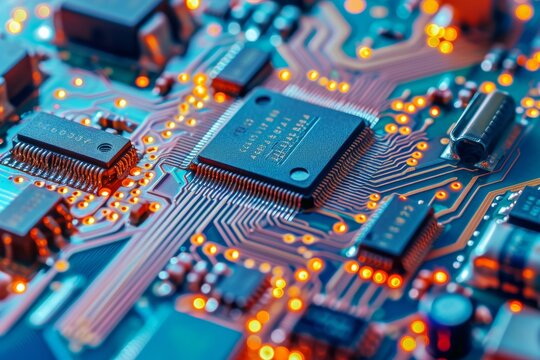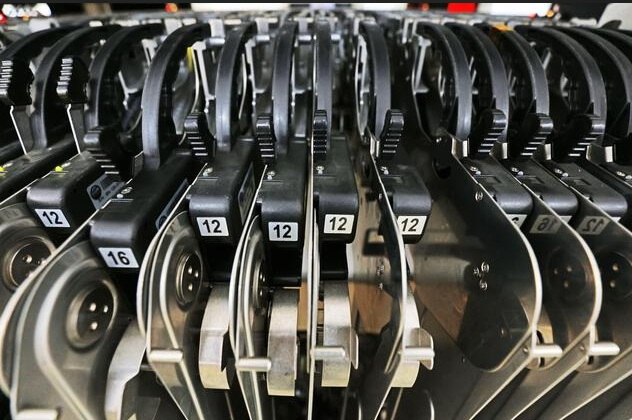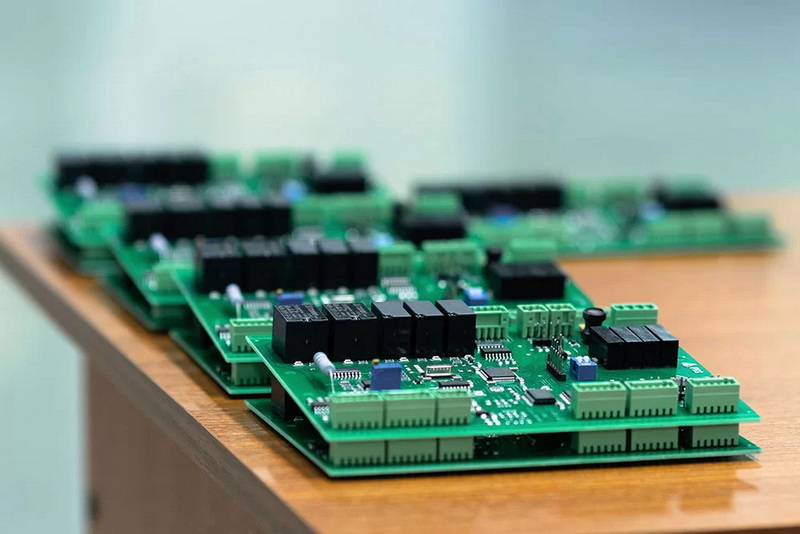Content Menu
● Introduction to SMT PCB Loader and Unloader
● Key Benefits of Using an SMT PCB Loader and Unloader
>> 1. Increased Production Efficiency
>> 2. Enhanced Accuracy and Consistency
>> 3. Labor Cost Reduction
>> 4. Improved Safety and Ergonomics
>> 5. Flexibility and Scalability
>> 6. Enhanced Traceability and Data Management
● How SMT PCB Loader and Unloader Improve SMT Assembly Line Workflow
>> Streamlining PCB Handling
>> Reducing Human Intervention
>> Synchronizing with Pick-and-Place Machines
● Choosing the Right SMT PCB Loader and Unloader
● Conclusion
● FAQ
>> 1. What is the primary function of an SMT PCB loader and unloader?
>> 2. How do SMT PCB loaders and unloaders improve production efficiency?
>> 3. Can SMT PCB loaders and unloaders handle different PCB sizes?
>> 4. What safety benefits do SMT PCB loaders and unloaders provide?
>> 5. Are SMT PCB loaders and unloaders compatible with Industry 4.0 systems?
In the fast-paced world of electronics manufacturing, efficiency, precision, and reliability are paramount. Surface Mount Technology (SMT) has revolutionized the assembly process of printed circuit boards (PCBs), enabling high-speed and high-density component placement. Integral to this process are SMT PCB loaders and unloaders, specialized equipment designed to automate the loading and unloading of PCBs during the assembly line. This article explores the numerous benefits of using an SMT PCB loader and unloader, highlighting how these devices enhance productivity, reduce labor costs, improve quality, and streamline manufacturing workflows.

Introduction to SMT PCB Loader and Unloader
Before diving into the benefits, it's essential to understand what SMT PCB loaders and unloaders are and their role in the SMT assembly line.
- SMT PCB Loader: This machine automates the process of feeding bare PCBs into the SMT assembly line. It ensures that PCBs are accurately positioned and delivered to the pick-and-place machines or other assembly equipment without manual intervention.
- SMT PCB Unloader: After the assembly process, the unloader automatically removes the finished PCBs from the line, preparing them for inspection, testing, or packaging.
Together, these machines form a critical part of the SMT production line, enabling continuous, automated PCB handling.
Key Benefits of Using an SMT PCB Loader and Unloader
1. Increased Production Efficiency
One of the most significant advantages of using an SMT PCB loader and unloader is the dramatic increase in production efficiency. Manual loading and unloading of PCBs can be time-consuming and prone to errors, causing bottlenecks in the assembly line.
- Continuous Operation: SMT PCB loaders and unloaders enable continuous, uninterrupted operation of pick-and-place machines and other assembly equipment.
- Reduced Downtime: Automated handling minimizes the time lost during manual PCB placement and removal.
- Faster Throughput: The speed and precision of these machines allow manufacturers to increase the number of PCBs processed per hour.
By automating the loading and unloading processes, manufacturers can maintain a steady flow of PCBs through the assembly line, which is critical for meeting tight production schedules and high-volume demands. This continuous operation also reduces the risk of idle time for expensive SMT equipment, maximizing return on investment.
2. Enhanced Accuracy and Consistency
Manual handling of PCBs can lead to misalignment, damage, or inconsistent placement, which affects the quality of the final product.
- Precise Positioning: SMT PCB loaders ensure that each PCB is accurately positioned for component placement, reducing errors.
- Consistent Handling: Unloaders remove PCBs gently and consistently, preventing damage to delicate components.
- Improved Quality Control: Consistent loading and unloading reduce defects and rework, improving overall product quality.
The precision of SMT PCB loaders and unloaders is especially important for complex PCBs with fine-pitch components or high-density layouts. Accurate positioning ensures that pick-and-place machines can place components exactly where they are needed, reducing the risk of soldering defects and improving first-pass yield.
3. Labor Cost Reduction
Automating the loading and unloading process significantly reduces the need for manual labor.
- Lower Labor Requirements: Fewer operators are needed to manage the assembly line.
- Reduced Human Error: Automation minimizes mistakes caused by fatigue or inattention.
- Cost Savings: Over time, the reduction in labor costs and error-related expenses leads to substantial savings.
In addition to direct labor cost savings, automation also reduces indirect costs associated with training, supervision, and workplace injuries. By reallocating human resources to more skilled tasks, manufacturers can improve overall operational efficiency.
4. Improved Safety and Ergonomics
Handling PCBs manually can expose workers to repetitive strain injuries and other workplace hazards.
- Reduced Physical Strain: Automation eliminates repetitive manual tasks, improving worker comfort.
- Safer Work Environment: Less manual handling reduces the risk of accidents and damage to PCBs.
- Compliance with Safety Standards: Automated systems help manufacturers meet occupational health and safety regulations.
Ergonomics is a critical consideration in modern manufacturing environments. SMT PCB loaders and unloaders help reduce the risk of musculoskeletal disorders by minimizing repetitive motions such as bending, lifting, and reaching. This not only protects workers but also contributes to higher morale and lower absenteeism.
5. Flexibility and Scalability
Modern SMT PCB loaders and unloaders are designed to handle a wide variety of PCB sizes and types, making them adaptable to different production needs.
- Versatile Handling: Capable of managing different PCB dimensions and thicknesses.
- Easy Integration: Compatible with various SMT assembly lines and equipment.
- Scalable Solutions: Suitable for small batch production as well as high-volume manufacturing.
This flexibility allows manufacturers to quickly switch between different product lines without extensive reconfiguration, supporting just-in-time manufacturing and reducing lead times. Scalability ensures that as production volumes grow, the loader and unloader systems can be upgraded or expanded to meet increased demand.

6. Enhanced Traceability and Data Management
Many advanced SMT PCB loaders and unloaders come equipped with smart features that support Industry 4.0 initiatives.
- Real-Time Monitoring: Track PCB flow and machine status in real time.
- Data Collection: Collect data for process optimization and quality control.
- Integration with MES: Seamlessly connect with Manufacturing Execution Systems for better production management.
Traceability is increasingly important in electronics manufacturing, especially for industries such as automotive, aerospace, and medical devices where regulatory compliance is strict. SMT PCB loaders and unloaders with barcode readers or RFID systems can log each PCB's journey through the assembly line, enabling detailed tracking and root cause analysis in case of defects.
How SMT PCB Loader and Unloader Improve SMT Assembly Line Workflow
Streamlining PCB Handling
The loader and unloader automate the physical movement of PCBs, which traditionally required manual intervention. This streamlining reduces cycle times and allows the assembly line to operate at optimal speeds.
By automating these tasks, manufacturers eliminate the variability introduced by human operators, ensuring a smooth and predictable workflow. This is particularly beneficial in high-mix, low-volume production environments where frequent changeovers are required.
Reducing Human Intervention
By minimizing manual handling, the risk of contamination, damage, and misplacement is significantly lowered. This leads to fewer defects and higher yields.
Manual handling can introduce contaminants such as dust, oils, or static electricity, which can compromise solder joint reliability. Automated loaders and unloaders often include features such as ESD protection and clean handling mechanisms to maintain product integrity.
Synchronizing with Pick-and-Place Machines
Loaders and unloaders are synchronized with pick-and-place machines to ensure smooth transitions between stages, preventing bottlenecks and downtime.
This synchronization is achieved through advanced control systems that communicate with the SMT line equipment, adjusting speeds and timing to maintain optimal throughput. The result is a balanced production line where each process step operates efficiently without waiting for upstream or downstream processes.
Choosing the Right SMT PCB Loader and Unloader
When selecting SMT PCB loaders and unloaders, manufacturers should consider:
- Compatibility: Ensure the equipment matches the PCB sizes and assembly line configuration.
- Speed and Throughput: Choose machines that meet production volume requirements.
- Automation Level: Decide between semi-automatic or fully automatic systems based on budget and needs.
- Maintenance and Support: Opt for reliable brands with good after-sales service.
- Advanced Features: Look for smart features like vision systems, barcode readers, and data connectivity.
Additionally, consider the footprint of the equipment and how it fits into the existing production floor layout. Some loaders and unloaders offer modular designs that can be customized to specific line configurations, providing greater flexibility.
Conclusion
The integration of SMT PCB loaders and unloaders into the SMT assembly line offers numerous benefits that directly impact manufacturing efficiency, product quality, and cost-effectiveness. By automating the loading and unloading processes, manufacturers can achieve higher throughput, reduce labor costs, improve safety, and maintain consistent quality standards. As electronics manufacturing continues to evolve, investing in advanced SMT PCB loader and unloader systems is a strategic move that supports scalability, flexibility, and Industry 4.0 readiness.
By embracing these automated solutions, manufacturers not only enhance their current production capabilities but also future-proof their operations against increasing complexity and demand. The SMT PCB loader and unloader are no longer optional accessories but essential components of a modern, efficient SMT assembly line.

FAQ
1. What is the primary function of an SMT PCB loader and unloader?
The primary function of an SMT PCB loader is to automatically feed bare PCBs into the SMT assembly line, while the unloader removes finished PCBs after assembly. Together, they automate PCB handling to improve efficiency and reduce manual labor.
2. How do SMT PCB loaders and unloaders improve production efficiency?
They enable continuous, uninterrupted operation of the assembly line by automating PCB handling, reducing downtime, and increasing throughput, which leads to faster production cycles.
3. Can SMT PCB loaders and unloaders handle different PCB sizes?
Yes, most modern SMT PCB loaders and unloaders are designed to be versatile and can handle a wide range of PCB sizes and thicknesses, making them suitable for various production requirements.
4. What safety benefits do SMT PCB loaders and unloaders provide?
By automating repetitive manual tasks, these machines reduce physical strain on workers, minimize the risk of accidents, and help maintain a safer working environment.
5. Are SMT PCB loaders and unloaders compatible with Industry 4.0 systems?
Many advanced SMT PCB loaders and unloaders come with smart features such as real-time monitoring, data collection, and integration capabilities with Manufacturing Execution Systems (MES), supporting Industry 4.0 initiatives.




















